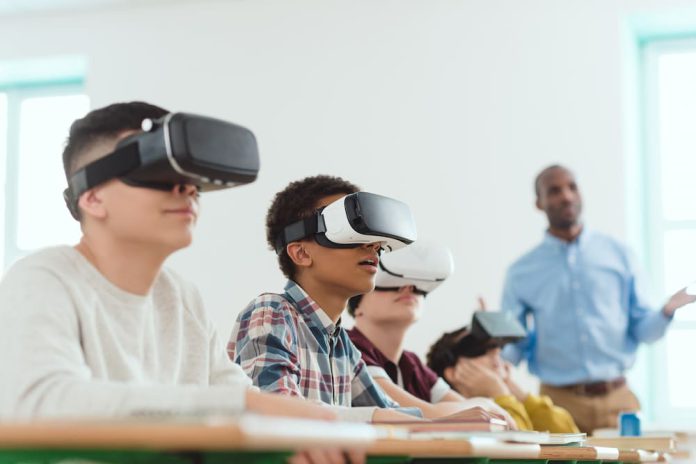Throughout its various stages of evolution, the film industry has witnessed significant changes, transitioning from the era of silent films to the utilization of digital effects. Presently, we’re on the verge of another significant transformation in the realm of filmmaking — the incorporation of virtual reality (VR) and more into post production. As technology progresses, filmmakers are exploring previously uncharted territories that could redefine how we interact with and engage in cinematic experiences.
Virtual Reality: Immersing in the Narrative
While not a completely novel idea, virtual reality has become more accessible and immersive than ever, due to recent technological advancements. VR offers viewers a chance to immerse themselves in the story, offering an unprecedented level of presence and interaction. With the increasing affordability and user-friendliness of VR headsets, filmmakers can now craft fully immersive experiences that transport audiences into fictional realms or real-world scenarios. This technology expands the horizons for storytelling, challenging the confines of conventional filmmaking and ushering in a new era of cinematic experiences.
One remarkable use of VR in film production is the implementation of virtual sets. Filmmakers can now use LED screens created prior to filming instead of the traditional green screens, made possible by powerful video game engines. This innovative approach, advocated by directors like Jon Favreau, enables improved lighting, seamless filming, and cost-effectiveness. Actors can perform in enhanced virtual environments and backgrounds, yielding brighter, smoother, and superior cinematic results compared to films shot on green screens.
For example, the popular TV series The Mandalorian revolutionized virtual production by opting for virtual sets over traditional green screens. The backdrop was projected onto LED screens created before filming, resulting in a more immersive experience for both actors and viewers. This technology is increasingly available to agencies and producers creating videos for marketing and training. Utilizing a VR background that displays content relevant to the speaker’s narrative improves the video quality, and interactive tools like hotspots further enrich the viewing experience.
Interactive Films: Directing the Story
Beyond the immersive capabilities of virtual reality, the future of film also holds the promise of interactive storytelling. Interactive films allow viewers to actively shape the narrative, steering the story’s course based on their choices. This emerging medium blurs the boundaries between filmmaking and gaming, offering a personalized and dynamic cinematic experience that adapts to the viewer’s choices.
Series like Black Mirror have showcased the potential of interactive storytelling. By enabling viewers to select different scenes, endings, and even influence the storyline, Black Mirror offered an engaging and unique experience that captivated its audience. This degree of interactivity results in a more engaging and memorable experience for viewers.
Augmented Reality: Amplifying the Real World
While VR immerses viewers in a fully virtual environment, augmented reality (AR) amplifies the real world by adding digital elements to it. With AR, filmmakers can seamlessly incorporate digital effects into real-world environments, crafting visually impressive and interactive experiences. AR could revolutionize movie theaters, allowing audiences to witness virtual characters and objects interact with the real world right from their seats.
AI and Machine Learning: Shaping the Creative Process
Artificial intelligence (AI) technologies can automate and enhance many aspects of the creative process, ranging from scriptwriting to post-production. AI algorithms can conjure up story ideas, analyze audience preferences, and even assist in editing and visual effects. While AI will never supersede human creativity, it can serve as a potent tool to streamline production, amplify storytelling, and push the boundaries of what’s achievable in filmmaking.
Beyond the Screen: The Advent of Extended Reality Experiences
Venturing deeper into the future, we can foresee a transition from traditional screens to extended reality (XR) experiences. XR merges elements of VR, AR, and mixed reality, creating immersive environments that seamlessly blend the digital and physical worlds. XR presents filmmakers with opportunities to craft unique and unforgettable experiences that transcend the limitations of traditional cinema.
In conclusion, the future of film holds thrilling possibilities, with virtual reality, augmented reality, interactive storytelling, AI, and extended reality all contributing to how we experience cinema. As technology continues to advance, filmmakers will have more resources to captivate audiences in ways never seen before. The potential is immense, and we’re on the threshold of a new filmmaking era that will redefine the limits of creativity, immersion, and storytelling.















